Welcome to our insightful exploration of India’s agriculture! In this post, we delve into the average seed rate per acre across various crops in India. Understanding the optimal seeding rates is crucial for farmers, as it directly impacts yield, costs, and overall crop health. From the lush rice paddies to the vast wheat fields, we will examine how different crops require distinct seeding strategies. Join us as we unravel the secrets of successful farming, providing valuable information for both seasoned farmers and agricultural enthusiasts.
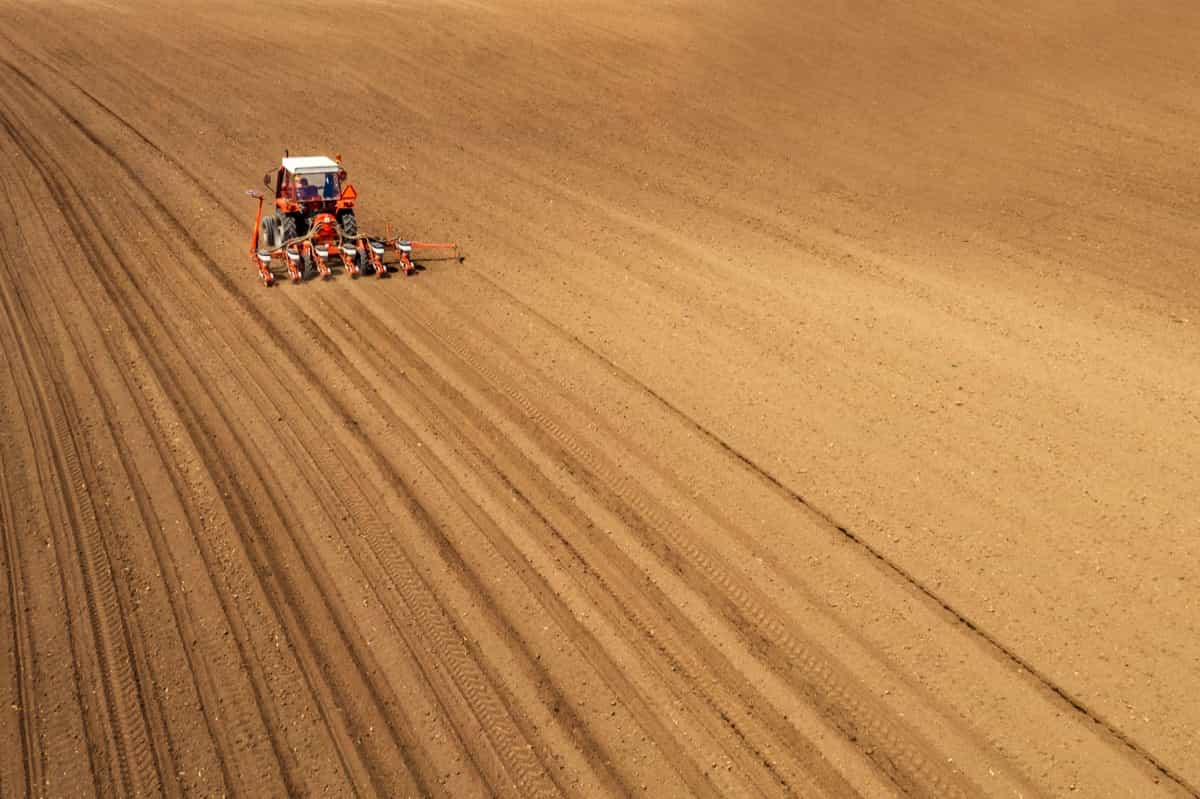
Factors Influencing Seed Rate per Acre in India
Seed rate is the amount of seed needed to sow a unit area of land. In India, it depends on factors such as crop, variety, seed quality, seed treatment, sowing method, soil type, climate, irrigation, weed management, and pest and disease control. Seed rates vary based on factors such as germination percentage, seed size, plant density, yield potential, and resistance to pests and diseases.
Seed quality determines germination percentage, vigor, and purity, with poor-quality seeds requiring higher rates. Seed treatment, which involves applying chemical or biological agents to the seed, can reduce seed rates by 10-15%. Sowing methods like broadcasting, drilling, dibbling, transplanting, and direct seeding also affect seed rates.
Climate affects seed rates by influencing temperature, rainfall, humidity, and sunlight, with hot and dry climates requiring higher seed rates. Irrigation affects seed rates by affecting moisture availability and stress tolerance. Weed management practices, such as manual weeding, mechanical weeding, chemical weeding, and integrated weed management, also impact seed rates. Pest and disease control measures also have different seed rates depending on the crop and variety.
Impact of Climate on Seed Rate per Acre in India
Climate change is one of the major factors affecting the seed rate per acre in India. Seed rate is the quantity of seeds required to sow a unit area of land. It depends on various factors such as crop type, variety, seed size, germination percentage, planting method, soil type, moisture level, weed infestation, pest and disease incidence, etc. Climate change can alter these factors and affect the seed rate per acre in different ways. For example, higher temperatures can reduce the germination percentage and increase the seed mortality rate of some crops.
In case you missed it: Fertilizer Application Rate Per Acre: Exploring Different Crop Fertilizer Application Rates
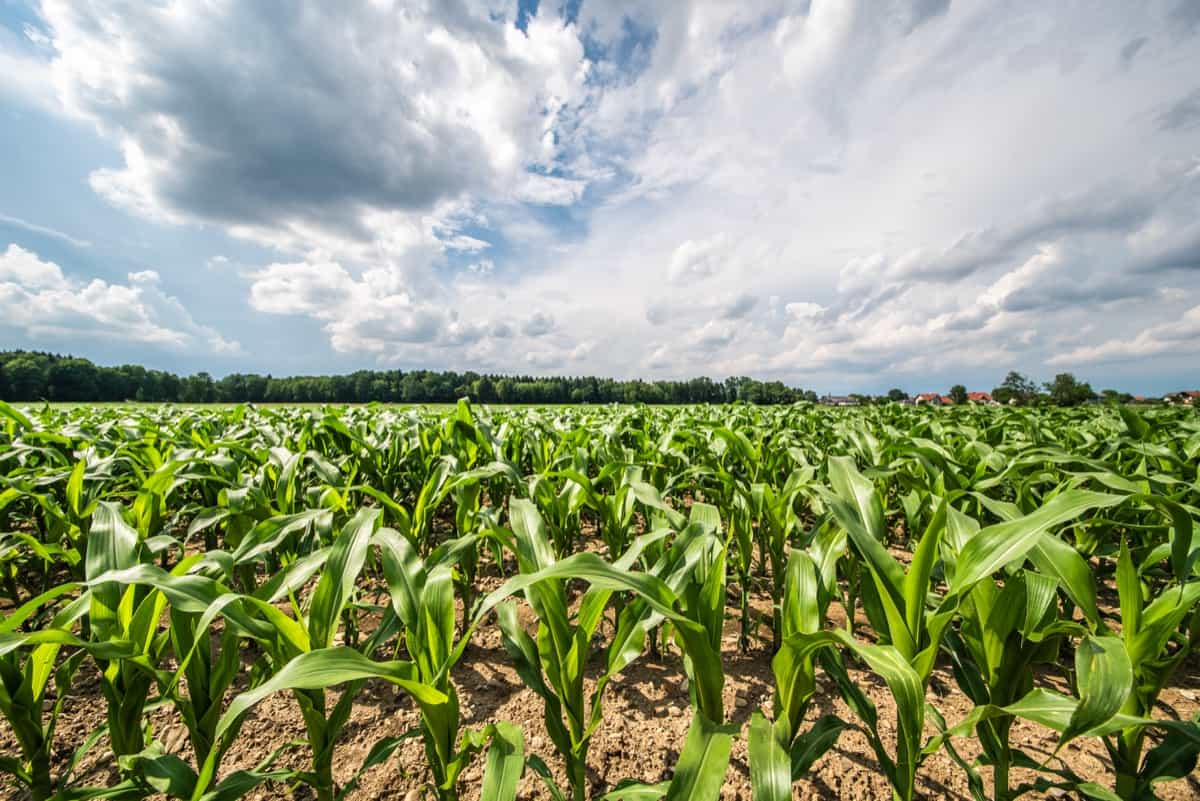
Increased rainfall can cause waterlogging and soil erosion, which can reduce seed availability and viability. Droughts can lower the soil moisture and fertility, which can affect the seed emergence and growth. Extreme weather events such as floods, cyclones, hailstorms, etc., can damage the crops and seeds at different stages of development. Therefore, climate change can have a significant impact on the seed rate per acre in India and require farmers to adapt their seed management practices accordingly.
Crop-Specific Seed Rate Recommendations for Indian Agriculture
Different crops have different seed rate requirements depending on their characteristics and agronomic practices. Therefore, farmers need to follow the crop-specific seed rate recommendations given by agricultural experts and research institutions. Some of the common crops grown in India and their recommended seed rates per acre are as follows:
- Rice: 20-25 kg for transplanted rice and 80-100 kg for direct-seeded rice
- Wheat: 100-125 kg for irrigated wheat and 75-100 kg for rainfed wheat
- Maize: 20-25 kg for hybrid maize and 15-20 kg for composite maize
- Sorghum: 10-12 kg for kharif sorghum and 8-10 kg for rabi sorghum
- Pearl millet: 3-4 kg for hybrid pearl millet and 2-3 kg for desi pearl millet
- Finger millet: 8-10 kg for broadcast sowing and 4-5 kg for line sowing
- Pigeonpea: 10-12 kg for pure crop and 6-8 kg for intercrop
- Chickpea: 75-100 kg for irrigated chickpeas and 60-80 kg for rainfed chickpeas
- Mungbean: 8-10 kg for irrigated mungbean and 6-8 kg for rainfed mungbean
- Soybean: 25-30 kg for irrigated soybean and 20-25 kg for rainfed soybean
Traditional vs. Modern Approaches to Determining Seed Rate per Acre
Traditionally, Indian farmers determined seed rate per acre using experience, intuition, and trial and error methods. They used simple tools and faced constraints like low seed quality, poor storage facilities, and limited availability of seeds. This led to wastage and low crop yields. Modern approaches involve using scientific methods, tools, and technologies to measure and optimize seed rates for different crops.
Farmers can use devices like seed meters, electronic scales, and digital calculators to measure the required seeds accurately. They can also access information from extension services, research publications, and mobile apps. Improved seeds with high germination percentage, vigor, and resistance to pests and diseases can reduce seed rate requirements. Advanced techniques like precision seeding and variable rate seeding can adjust seed rates based on soil conditions, crop growth stage, and weather forecasts.
Economic Considerations in Determining Seed Rate per Acre
The optimal seed rate per acre is a crucial decision for farmers, as it impacts both the cost of production and the revenue from the crop. Farmers should consider the economic aspects of seed rates when deciding how much seeds to sow for their crops. The cost of seeds is a significant factor, and higher seed rates can lead to higher costs and vice versa. Similarly, the cost of other inputs such as fertilizers, pesticides, irrigation, and labor also affects the seed rate.
In case you missed it: Cost of Cultivation of Potato Per Acre in India: Exploring from Seed Costs to Market Charges
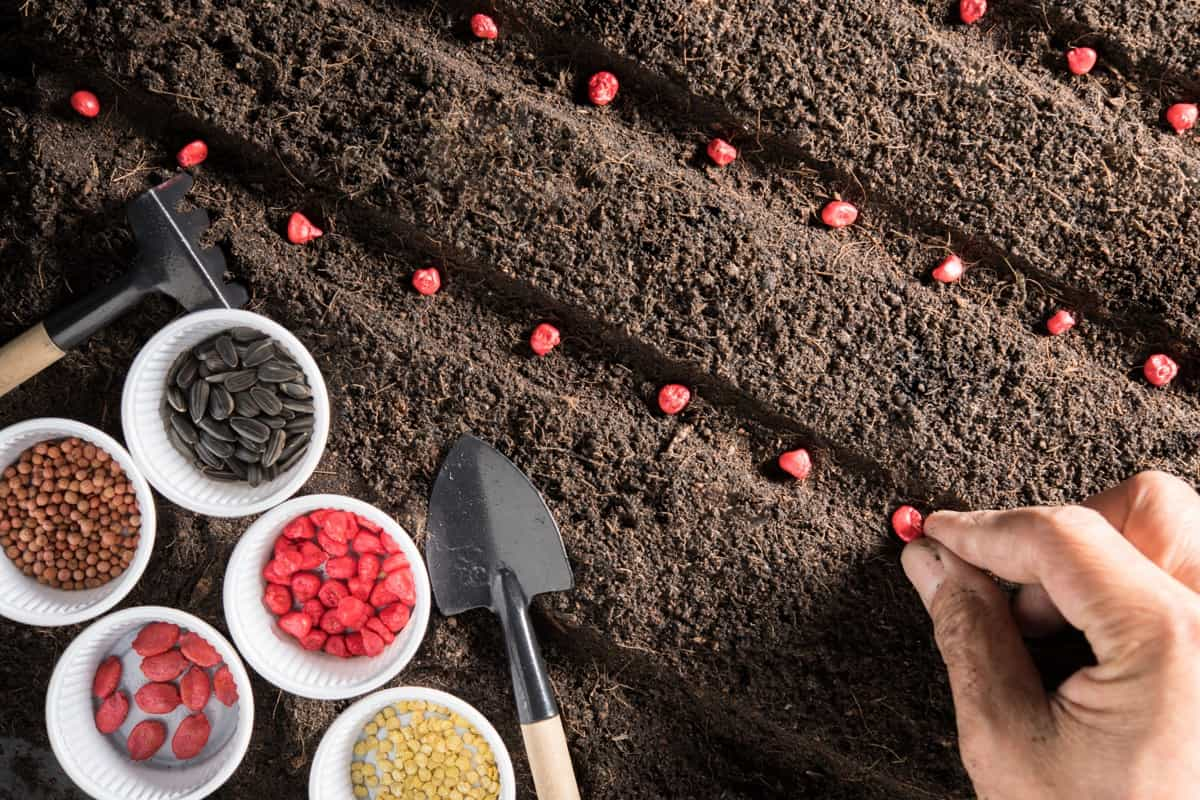
Farmers should choose a seed rate that minimizes the cost of seeds without compromising crop yield and quality. Seed rate also influences crop yield and quality by affecting plant population, growth, competition, pest and disease incidence, and other factors. Higher seed rates can increase crop yield by ensuring adequate plant density and uniformity, while lower rates can improve crop quality by allowing more space, light, and nutrients for each plant.
Market price and demand also impact seed rate, as it influences the supply and quality of the produce. Higher seed rates can increase the supply by producing more quantity, while lower rates can increase market price and demand by lowering quality and increasing competition. Farmers should choose a seed rate that balances market price and demand without losing their market share and income.
Best Practices for Calculating Seed Rate per Acre in Indian Farming
Seed rate is the amount of seed needed to sow a unit area of land, and it depends on factors like crop variety, seed size, germination percentage, planting method, spacing, soil type, climate, and pest and disease incidence.
It is crucial for optimum plant population, uniform crop stand, efficient resource use, and higher yield. To calculate the seed rate per acre in Indian farming, use certified seeds from authentic sources with high germination percentage and vigor, test the germination percentage before sowing, and adjust the seed rate using the formula:
- Seed rate (kg/acre) = (Desired plant population per acre x 100) / (Germination percentage x Expected field emergence).
- Consider the planting method and spacing when calculating the seed rate.
- Follow the recommended seed rate for different crops and varieties based on the agro-climatic zone and season.
- Treat seeds with appropriate fungicides, insecticides, and bio-fertilizers before sowing to protect them from soil-borne diseases and pests.
- Use suitable seed drills, planters, or seeders for precise and uniform sowing at the desired depth and spacing.
- Avoid excess or deficient sowing to avoid overcrowding or underutilization of land, poor crop growth, competition for nutrients, water, light, increased weed infestation, and reduced yield.
Innovative Techniques for Optimizing Seed Rate per Acre
Seed rate is the amount of seed required to sow a unit area of land. It is an important factor that affects the crop yield and quality. Optimizing seed rate per acre can help farmers save seed costs, reduce weed competition, improve crop stand, and enhance crop performance.
- Using quality seeds from certified sources that have high germination percentage, vigor, and purity.
- Using seed treatment methods to protect seeds from diseases, pests, and soil-borne pathogens.
- Use precision planting equipment such as a bed planter, happy seeder, zero-till planter, etc., that can place seeds at a uniform depth and spacing.
- Seed rate calculators or tables based on crop variety, soil type, moisture level, planting method, etc., are used to determine the optimal seed rate per acre.
- Adjusting seed rate according to the climatic conditions, cropping system, weed pressure, etc., to achieve the desired plant population and crop density.
In case you missed it: 10 Best Garden Tillers in India For Seed Bed Preparation and Weed Control: Price List Included
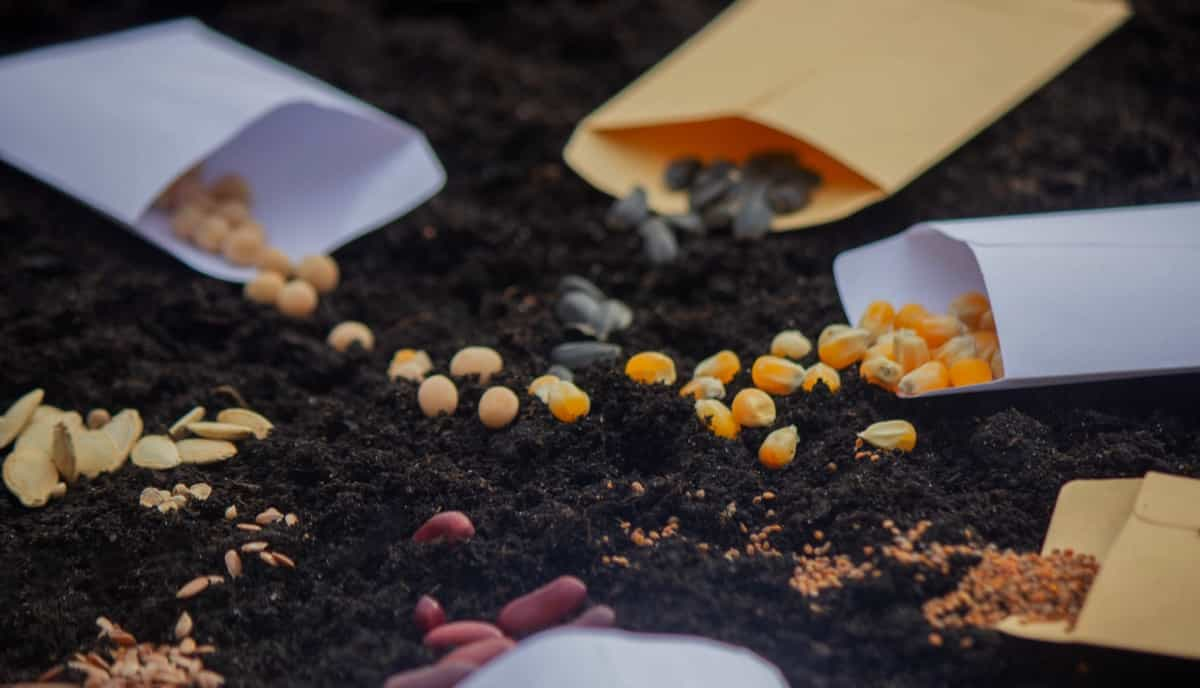
Seed Treatment and its Influence on Sowing Density in India
Seed treatment is the process of application of chemical or biological agents to seeds before sowing to enhance their germination, emergence, and establishment. Seed treatment can also protect seeds from various biotic, abiotic stresses such as diseases, pests, drought, salinity, etc.
- Improving the seed quality and viability reduces the seed rate per acre and increases the seed use efficiency.
- Enhancing the seedling vigor and growth improves the crop stand and reduces the need for thinning or gap filling.
- Suppressing the weed growth and competition allows higher sowing density without affecting the crop yield and quality.
- Inducing resistance or tolerance to various stresses enables higher sowing density even under unfavorable conditions.
The Role of Technology in Precision Seeding and Seed Rate Management
Precision seeding and seed rate management are crucial in agriculture due to the use of technology. Technologies such as remote sensing, GIS provide accurate and timely information to farmers, enabling site-specific seed rate recommendations. Drones capture high-resolution images of the field, monitoring crop growth and health.
Sensors and IoT measure parameters like soil moisture, temperature, and nutrient levels, enabling real-time decision-making. Smartphones and apps offer guidance on seed rate calculation, seed treatment methods, and planting techniques. Digital platforms and networks connect farmers with experts and extension workers, facilitating knowledge sharing and feedback. These technologies are essential for efficient and effective seeding and seed rate management.
Adapting Seed Rate per Acre to Sustainable Agricultural Practices in India
Sustainable agriculture in India aims to conserve natural resources, improve environmental quality, and ensure social equity. By adapting the seed rate per acre to sustainable practices, India can reduce input costs, enhance soil health and fertility, conserve water resources, minimize environmental impact, and improve food security and nutrition.
Sustainable practices include crop rotation, intercropping, organic farming, and conservation agriculture. Crop rotation breaks pest cycles, improves soil structure, and diversifies income sources. Intercropping efficiently utilizes space, light, and nutrients, while organic farming uses organic inputs to enhance soil fertility and crop quality. Conservation agriculture, on the other hand, reduces soil disturbance, conserves moisture, and increases soil organic matter.
Government Policies and Guidelines Regarding Seed Rate per Acre
India’s government has implemented several policies and guidelines to regulate the seed sector and promote the use of quality seeds by farmers. These include the Seeds Act of 1966, which regulates seed registration, certification, and quality control, and the Seeds Rules of 1968, which outline procedures for seed production, processing, testing, labeling, storage, and distribution. The National Seeds Policy of 2002 aims to increase the availability of quality seeds at affordable prices and promote hybrid, transgenic, and organic seeds.
In case you missed it: How to Identify Fake Seeds: Key Differences Between Real and Counterfeit Seeds
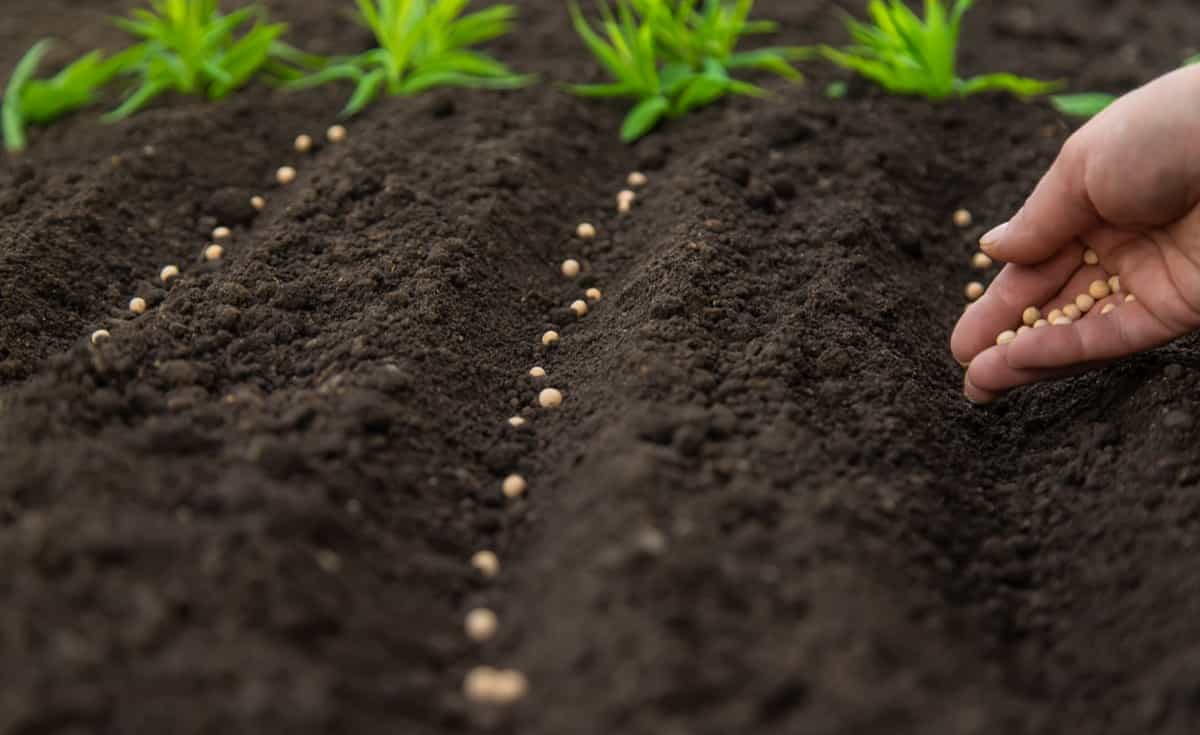
The Protection of Plant Varieties and Farmers Rights Act, 2001, protects plant varieties developed by farmers, researchers, and private companies and grants rights to save, use, exchange, and sell their seeds. The National Mission on Seeds, 2010, aims to increase seed replacement rate and production in India by strengthening seed infrastructure, research, extension, and quality assurance.
Community-Based Approaches to Sharing Knowledge on Optimal Seed Rates
Community-based approaches involve local people collaborating to share knowledge and solve problems. They can help improve farmers’ awareness of improved seed rate practices through peer learning, demonstration plots, field days, and farmer-to-farmer extension. Farmers can make decisions based on their needs, preferences, resources, and experiences.
Community seed banks, cooperatives, and seed fairs can improve seed access and availability. Strengthening social capital among farmers fosters trust, cooperation, communication, and collective action. The conservation and utilization of local and traditional seed varieties are also promoted. Examples of community-based approaches include farmer field schools (FFS), participatory plant breeding (PPB), and farmer-managed seed systems (FMSS).
FS involves regular meetings for farmers to discuss crop production, PPB involves collaboration between farmers, researchers, and extension workers to develop new crop varieties, and FMSS is an informal system where farmers produce, save, exchange, and sell their seeds within their communities or networks.
Challenges in Implementing Ideal Seed Rates Across Different Regions of India
India faces challenges in implementing optimal seed rates due to a lack of reliable data, standardized methods, inadequate supply of quality seeds, lack of awareness among farmers, affordability of seeds for small and marginal farmers, inadequate extension services, and lack of supportive policies. These challenges include a need for standardized methods, an inadequate supply of quality seeds, and a lack of awareness for farmers about the importance of optimal seed rates. Addressing these issues is crucial for ensuring sustainable agriculture in India.
Comparative Analysis of Seed Rates for Different Crops in India
| Crop | Seed Rate (kg/acre) |
| Wheat | 40-50 |
| Rice | 20-24 |
| Maize | 6-10 |
| Cotton | 4-6 |
| Soybean | 30-32 |
| Paddy | 32-40 |
| Barley | 40-50 |
| Mustard | 2-2.4 |
| Sugarcane | 16,000 pieces/Setts |
| Groundnut | 40-48 |
| Sunflower | 4-4.8 |
| Sorghum | 5-6 |
| Jowar | 3-4 |
| Bajra | 1.6-2 |
| Pulses | 20-30 |
| Tomato | 0.4-0.5 |
| Onion | 3.5-4.5 |
| Cabbage | 0.4-0.5 |
| Cauliflower | 0.4-0.5 |
| Brinjal (Eggplant) | 0.4-0.5 |
| Carrot | 1.2-1.5 |
| Green Beans | 8-10 |
| Cucumber | 0.5-0.6 |
| Spinach | 10-12 |
| Chilli | 1-2 |
In case you missed it: How to Identify Fake Seeds: Key Differences Between Real and Counterfeit Seeds

Conclusion
The average seed rate per acre in India varies significantly across crops, reflecting the diverse agricultural practices and environments. From wheat to vegetables, each crop demands a specific seeding strategy, balancing efficiency and yield. This knowledge is vital for optimizing crop production and ensuring sustainable farming in India.
- Types of Pesticides Used in Agriculture: A Beginner’s Guide
- Economical Aquaculture: A Guide to Low-Budget Fish Farming
- 15 Common Planting Errors That Can Doom Your Fruit Trees
- How to Make Houseplants Bushy: Effective Tips and Ideas
- Innovative Strategies for Boosting Coconut Pollination and Yield
- Pollination Strategies for Maximum Pumpkin Yield
- The Complete Guide to Chicken Fattening: Strategies for Maximum Growth
- Natural Solutions for Tulip Problems: 100% Effective Remedies for Leaf and Bulb-Related Issues
- Revolutionizing Citrus Preservation: Towards a Healthier, Greener Future
- Natural Solutions for Peony Leaf and Flower Problems: 100% Effective Remedies
- Maximizing Profits with Avocado Contract Farming in India: A Comprehensive Guide
- Natural Solutions for Hydrangea Problems: 100% Effective Remedies for Leaf and Flowers
- The Ultimate Guide to Choosing the Perfect Foliage Friend: Bringing Life Indoors
- From Sunlight to Sustainability: 15 Ways to Use Solar Technology in Agriculture
- The Ultimate Guide to Dong Tao Chicken: Exploring from History to Raising
- The Eco-Friendly Makeover: How to Convert Your Unused Swimming Pool into a Fish Pond
- Mastering the Art of Delaware Chicken Farming: Essentials for Healthy Backyard Flocks
- 20 Best Homemade Fertilizers for Money Plant: DIY Recipes and Application Methods
- How to Craft a Comprehensive Free-Range Chicken Farming Business Plan
- Brighten Your Flock: Raising Easter Egger Chickens for Beauty and Bounty
- How to Optimize Your Poultry Egg Farm Business Plan with These Strategies
- Subsidy for Spirulina Cultivation: How Indian Government Schemes Encouraging Spirulina Farmers
- Ultimate Guide to Raising Dominique Chickens: Breeding, Feeding, Egg-Production, and Care
- Mastering the Art of Raising Jersey Giant Chickens: Care, Feeding, and More
- Ultimate Guide to Raising Legbar Chickens: Breeding, Farming Practices, Diet, Egg-Production
- How to Raise Welsummer Chickens: A Comprehensive Guide for Beginners
- How to Protect Indoor Plants in Winter: A Comprehensive Guide
- Ultimate Guide to Grow Bag Gardening: Tips, Tricks, and Planting Ideas for Urban Gardeners
- Guide to Lotus Cultivation: How to Propagate, Plant, Grow, Care, Cost, and Profit
- Agriculture Drone Subsidy Scheme: Government Kisan Subsidy, License, and How to Apply Online
- Ultimate Guide to Raising Araucana Chickens: Breed Profile, Farming Economics, Diet, and Care
- Bringing Hydroponics to Classroom: Importance, Benefits of Learning for School Students
- Ultimate Guide to Raising Polish Chickens: Breed Profile, Farming Economics, Diet, and Care
- Ultimate Guide to Raising Australorp Chickens: Profile, Farming Economics, Egg Production, Diet, and Care
- Silkie Chicken Farming: Raising Practices, Varieties, Egg Production, Diet, and Care
- Sussex Chicken Farming: Raising Practices, Varieties, Egg Production, Diet and Care